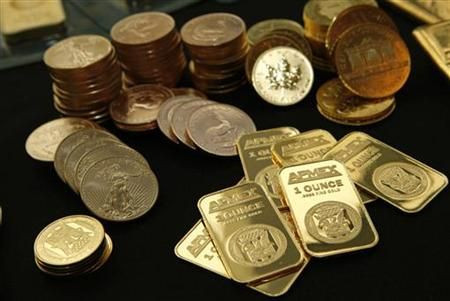Interpreting the Gold Boom and Bust: Still a Safe Haven?

One thing is clear. There's nothing like a gold standard when it comes to analyzing the way the precious metal prices have behaved in the past three months.
Gold's decade-long bull run peaked in the past three months when the prices went up by around 30 percent. Analysts said crises -- American and European -- fed the gold price spiral and the yellow metal was the ultimate safe haven that would go from strength to strength as despair grows across the global economy.
In the past week, gold reversed its price boom and went south. However, the other factors in the puzzle -- the European sovereign default threat and the persistent gloom in the U.S. economy -- remained intact. There's now a greater threat of Greece sinking into a default, and economic indicators from the U.S. don't show the economy is turning a corner.
And yet, gold fell. According to conventional wisdom, it had to rise when the times were uncertain. The gold bust now looks like a treacherous deal to the investors who flocked to the metal in the hopes of hedging themselves against market turmoil. In a funny twist, the fall of gold is now attributed to the same market turmoil. While the Greece crisis can potentially set off a chain of events that could result in another global recession, the need for the U.S. to adopt tighter budget regulations is ever increasing.
However, the Financial Times pointed out in a report that this isn't the first time that gold fell during a crisis, negating its claim to be the ultimate safe haven. A similar phenomenon was observed during the height of the financial crisis in 2008.
From March 17, the day after the Bear Stearns collapse, to a low in mid-October, the bullion fell more than 30 per cent. In the next year, it surged 50 per cent, the report said.
With history as our guide ... it's clear that gold's been doing this sort of thing all along its massive run-up - since 2005 it's seen five similar corrections, wrote Matt Insley at Daily Resource Hunter.
According to Cameron Alexander, senior metals analyst at GFMS, a unit of Thomson Reuters, the market over-reacted to the situation in the Eurozone and the U.S., causing a plunge in gold prices over the past couple of days. He said gold's appeal as a safe-haven asset remains solid, according to Reuters. Alexander said the strong investment demand for gold could push it towards $2,000 by the end of the year.
Some also see big opportunities in the current scenario. A Commodity Online report points out that the fundamental factors remain solid for gold despite prices falling over 20 percent. The major reason behind the optimism is that the U.S. Federal Reserve's admission that the economy was facing a serious downside risk with GDP growth declining and unemployment rates remaining above 9 percent.
© Copyright IBTimes 2024. All rights reserved.





















